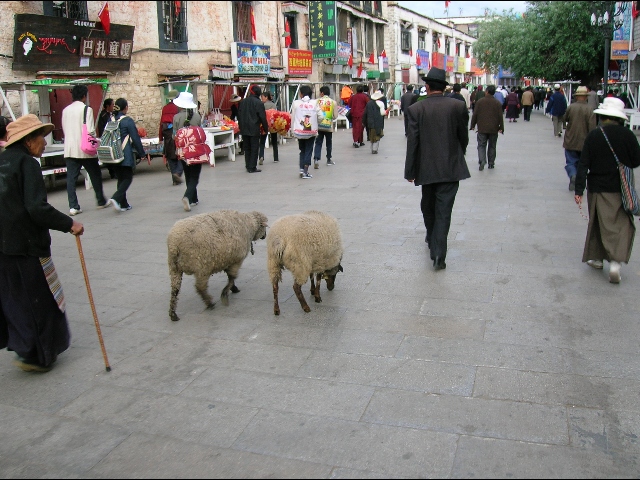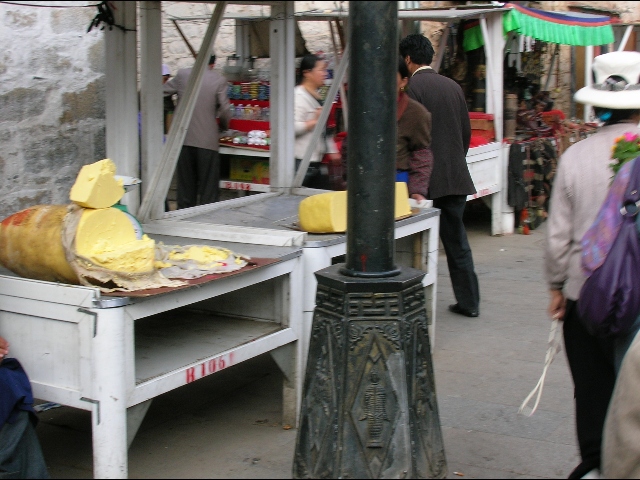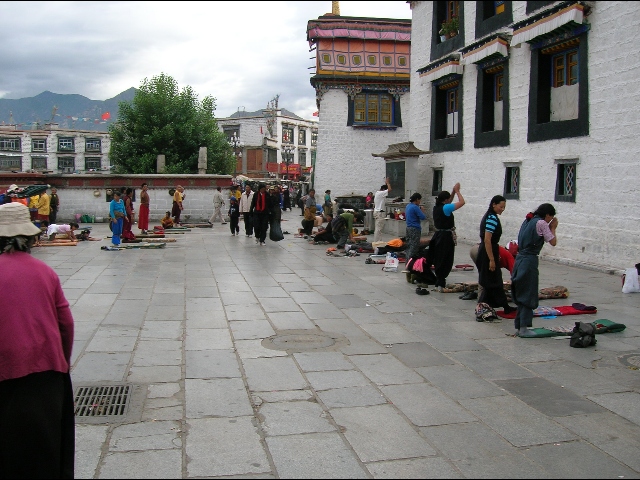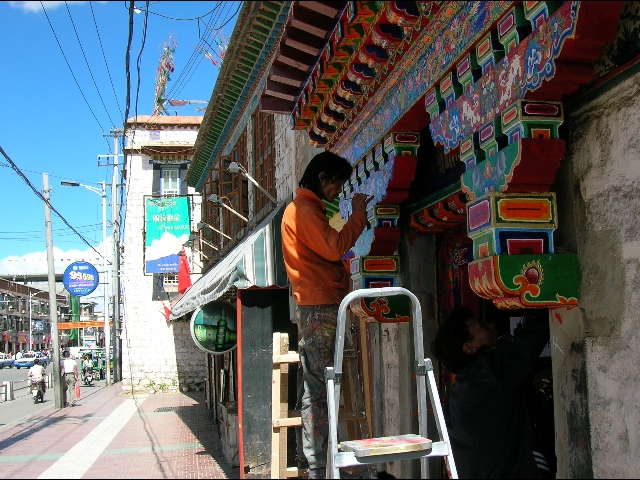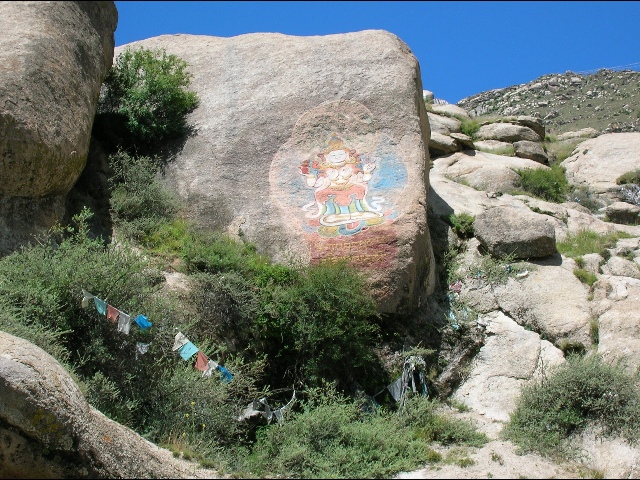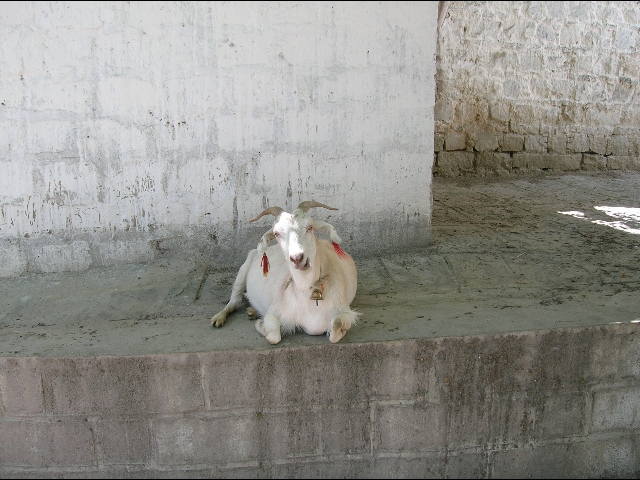| Prelude |
Day 2: Sera MonasteryMy first night in Lhasa is scary: every hour or so I wake up and feel as if I have 'forgotten' to breathe. I catch up with the breathing I have forgotten to do by panting hard for a minute or two, but then going to sleep again is scary - what if I forgot to breathe and never remembered? This fitful and interrupted sleep remains with me through my whole time in Tibet.I realize just how thin the air here is when I open a can of cocoa mix I have bought from the U.S. The seal is airtight, and when I peel it off the cocoa bursts out of the container in a fountain. The air is remains chocolate-colored for a few seconds, and I try not to breathe, until the fine brown cocoa dust settles on every surface in the room. Thinking about it I understand why: the inside of the can was still at sea-level pressure, whereas the air pressure here is not much more than half that. My first trip in the morning is to the Barkhor, the old central temple area.
Anyway, I do the circuit and then set down my camera and other tourist gear and start to do prostrations in front of the temple. Suddenly everyone notices me and their view of me completely changes.
To the Tibetans I am suddenly a very sympathetic figure. I am besieged with offers of hand-pads, knee-pads, and even chest-pads. They are afraid I will tear my skin to shreds on the rough flagstones, but I'm reluctant to accept, partly because everything is filthy but mostly because it seems to raise the expectation that I will spend the whole morning doing prostrations (like the locals) rather than just dash off the quick twenty-eight I was planning on. To the Chinese tourists I am fascinating: all cameras are pointed in my direction. Seeing the locals engage in this ritual is eye-opening, of course, but more or less to be expected. To see a white guy, who has a money belt and a digital camera just as they do, doing the same thing, really blows their minds. Centuries, languages, and cultures collapse together. I make the Western tourists extremely uneasy. They have a lot of trouble deciding how far away from me they want to be. They came to be observers of the spiritual scene, and perhaps felt that the mere act of observing conferred merit on them in some obscure way. But perhaps spiritual life requires some sort of actual participation? As observers they feel bound to witness this act, even as they want to mentally run away from its implications. No wonder they don't know where to stand, or whether to take a photo of me that may give rise to awkward questions from friends at home. Of the two prostration prayers I semi-remember I choose the Nyingma version, partly because it's shorter, but mainly because as a Tai Chi practitioner I love the second line, in which I take refuge in the Chi, the meridians, the acupuncture points, and my own Buddha-nature:
Könchog sum ngö de shek tsa wa sum Twenty-eight prostrations is just the right number - enough to establish a devotional mood but about ten short of a cardiorespiratory crisis. The achievement would be more impressive if I hadn't had to stop and rest for two minutes on the level three-hundred-yard walk from the hotel to here. Sometimes in Lhasa, the things that you expect to be strenuous are actually easier than very simple activities that you expect to be easy and then find out you're wrong.
In the afternoon I head out to Sera monastery on the outskirts of town, taking a bus to the end of the line and then walking. I do the 'kora' (circuit) of the monastery, walking through the hills and clambering up treacherous gravelly slopes to view the rock-paintings.
I have company: Tibetans of all ages do the circuit, taking breaks to do prostrations, recite mantras, meditate, or sometimes just hang out.
I am about half way around when suddenly the hitherto quiet monastery bursts into raucous sound that is deafening even half a mile away. Are they playing some rowdy contact sport egged on by large crowds of even more rowdy supporters? No, I find out later as I get close to the monastery: they are engaged in the ancient art of Tibetan monastic debate, which is not only ruthless but also extremely physical and loud, involving much slapping, pointing, shouting and stomping.
|
